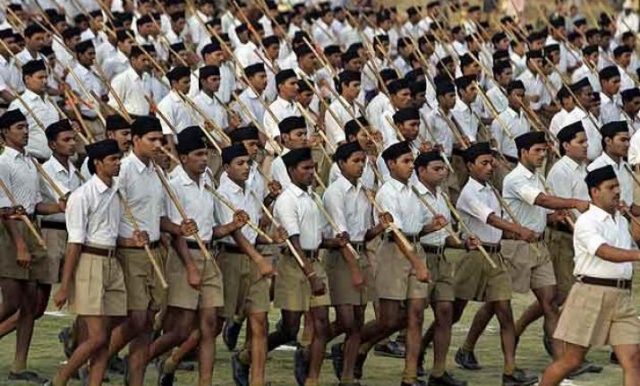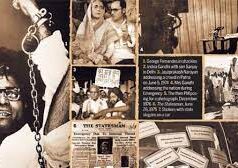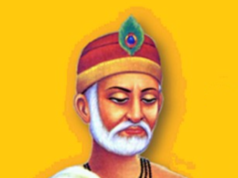
I recall one of my idle chats during the Emergency with a Communist friend at St Xavier’s College. I had claimed that ultimate battle would be between RSS and Communists. I was too young at that time. I don’t know how I came to that conclusion, but it seems the battle of ideologies is finally boiling down to this. In past few years, declining Communist ideology has morphed into Neo-Left now, while hard Communism has become violent Left. Both ends and other variants are entwined together by Urban Naxals. These variants include pseudo-secular forces and Jihadi forces masquerading as secular ideologies now. So, ultimately it is Hindu cultural nationalism vs others’ framework of Communist ideology. An ideology that is more alive in the media today than on the grounds.

Why the Comparison?
Now, let me explain why I decided to compare the two philosophies or ideologies that came up in Bharat nine decades back. There has hardly been a comparative analysis between two significant organisations representing two strains of thought that are poles apart. Both organisations were born in 1925, just a few months apart and both are cadre based. One began as an appendage of the international Communist movement, Comintern, the other as an indigenous Bharatiya movement pivoted on cultural nationalism and Hindu roots of our civilisation. Names of the two embodied the stark difference between the two – Communist Party of India (CPI) (underlining it as a part of the international movement, therefore not named Indian Communist Party) and the other being Rashtriya Swayamsevak Sangh (RSS) – National Volunteer Corp.

CPI was provided with financial help via various conduits including publications by Russia and later by China. A funny aside is that in 1952 elections, Radio Tashkent ran their propaganda, in an election where it stood 2nd in tally after Congress with 16 seats. On the other side, RSS workers managed the organisation on shoestring budgets or out of their pocket.
RSS was founded by Dr KB Hedgwar who had been part of various streams of freedom movements to ensure that Bharat had a united patriotic disciplined society that could harness the independence positively that, he believed, was just some years away. He put in his entire energy to raise this essentially non-political organisation. The oath a swayamsevak took clearly stated that he would work for the Independence of the nation. This was purely an indigenous movement, rooted in Bharatiya ethos and run purely by own sweat and blood by its members. An RSS song recited that ‘tan se, man se, dhan se, hum karein rashtra araadhan’ – with body, mind and wealth, we worship the nation.
RSS leadership respected all the movements that supported freedom movement – whether Congress ran them – the umbrella organisation – or revolutionaries or Hindu Mahasabha. Dr Hedgewar avoided criticism of any path to freedom, though he aligned himself to Congress’s non-violent path. The new Sarsanghachalak Shri MS Golwalkar aka Shri Guruji imbibed this spirit. Though he criticised lack of preparation in 1962, he saw to it that RSS swayamsevaks lent a helping hand to every government effort.
Both organisations were born in 1925, just a few months apart and both are cadre based. One began as an appendage of the international Communist movement, Comintern, the other as an indigenous Bharatiya movement pivoted on cultural nationalism and Hindu roots
RSS firmly believes that Bharat is culturally one nation since the documented history of last 6000 to 8000 years, recorded so far. For RSS Vivekananda is the principal icon of the Renaissance
Somewhere in 1975 Communists lost their moorings and got sucked into Congress eco-system, thus losing their unique identity and distinct base
Inspiration Forces
The inspiration for RSS has been Hindu knowledge system, Hindu heritage, Bharat’s glorious history and its history of sustained resistance to foreign invaders for nearly 500 years before Bharat was overpowered by brutality and unprincipled warfare. It realised that problem lay within – a divided society, internal fights on caste, faith and regionalism. The overarching connect between all these elements, the Hindu culture, was forgotten. It came up as an organisation with an innovative way of working rooted in Bharatiya soil. It treated ancient roots, local traditions, and religious strain as strengths of the Bharatiya people.
CPI’s inspirations lay outside as mentioned earlier. The dependence and genuine feeling of being part of an international communist movement led a faction to support China during 1962 war that became CPI (M) after a split. This same group also tried to sabotage in the army by infiltration and creating counter groups to sabotage it when possible. The latest inspiration seems to be North Korea.
Communists and its larger Left family have no faith in the Bharatiya knowledge system. Following the West, they believe it to be a hoax. They see Bharat as backward, wastefully religious, stuck in medieval dark ages. The excellent intellectual pedigree of leadership of the Communist movement refused to read a few pages of Bharatiya history. Gandhian historian Dharampal’s path-breaking work that came out around 1964 was rejected and sidelined by Communists. There could be no reason except refusal to accept the facts he presented. This inherited intellectual inferiority complex taking a western worldview of Bharatiya history has been a significant cause of their failing.
Communists make no effort to find a common thread with Bharatiya people. They believe that religion is the opium of masses and deride it, failing to differentiate between dharmic Bharatiya life and monolithic, inflexible religions of the West. They refuse to understand the difference between Dharma and religion. In the process, spiritual strength of Bharat has been neglected. Communists rejected even Swami Vivekananda as a religious revivalist. Only recently, they have tried to re-interpret Vivekananda as a social revolutionary, perhaps out of political compulsions rather than conviction upon realising their mistake. But, this interpretation is superficial.
RSS firmly believes that Bharat is culturally one nation since the documented history of last 6000 to 8000 years, recorded so far. For RSS Vivekananda is the principal icon of the renaissance. It believed that significant minority groups – Muslims and Christians had Hindu descendants and were Hindu by culture only professing different faith, about which it had no problem.
Influenced by the colonial Western worldview, Communists believe that Bharat is not one nation but 16 nations welded together by force. They passed a resolution to support this thesis in 1942 and went onto recommend British Cabinet mission in 1946 to break Bharat into 16 sovereign nations. By the same logic, they endorsed the formation of Pakistan and right of J&K to seek independence. They had a significant role in tutoring and marketing Sheikh Abdullah as a secular leader, different from his former position as a rabid communal Muslim leader who led 1931 rebellion, leading to killing and persecution of Kashmiri Hindus.
CPI initially refused to accept caste as a serious issue in social structure and stuck to class struggle theory. After failing to get acceptance, they tried to map castes as classes. Communists slowly lost their hold over even poor workers and peasants. In tribal areas, Naxals took over as advocates of weak, but their reliance on the force of bullets to perpetuate their power and oppose any development alienated them from the people. Communists lost ground in trade union field as RSS aligned Bharatiya Mazdoor Sangh rose, while many trade unionists turned independent professional treating unionism as a business that worked well for the workers and union leaders. The ground kept slipping below their feet steadily. What further compounded the problems was that the older leadership kept holding the reigns of various organisations as very few committed new generation leaders joined the ranks. The youth couldn’t understand their old rhetoric and confused thinking that still lived in 1940-50s.
Only positive aspect of the movement was that it did not turn dynastic like all other parties except Bharatiya Janata Party. However, the inner party democracy dissent is crushed mercilessly like all Communist parties around the world. In Kerala, it can take a violent turn too. Recall the fate of their one-time leader M V Raghavan.
One excellent tactic it adopted was to ride over the shoulders of fawning Nehru and more powerfully under Indira Gandhi to take control over the intelligent network, be it academic or media that was fed by academia. The intellectual exercise was outsourced by Congress leadership to Communists. This set the narrative for seven decades and ruled over the minds and intellect of people. They excluded any alternative narratives, kept out academicians and their works that did not tow their line. In spite of all the hard work done by Communists, the collective memory of the past residing in Bharatiya people’s minds did not wither away as the ruling elite had expected. The idea of a new nation to be defined by new paradigm itself went over the heads of ‘natives’ while RSS concept of an eternal nation struck a chord in the hearts of the people.
Years of Communist efforts got further weakened with the implosion of Communist nation-states and crumbling of Marxist theory in practice as predicted by RSS ideologue Dattopant Thengadi in1970s when Communism was at its peak. The result of this developments and evolution of national psyche saw further marginalisation of Communism. On the other hand, slow, silent one to one conversation and heart to heart connect with systematic expansion in every walk of life saw RSS strike deep roots in Bharatiya soil. Keeping away from electoral politics proved to be a big positive.
Deendayal Upadhyaya had said that each nation has its own chiti or inherent nature. The nations that recognise this chiti and create policies in line with this, thrive. Those who create policies contrary to their chiti, fail. We can grasp the cause for success and failure of RSS and Communists/Left when we analyse it on this touchstone of ‘chiti’ of Bharat’.
– Ratan Sharda
(The writer is a well-known author. His latest book is RSS 360°: Demystifying Rashtriya Swayamsevak Sangh)
Source: Organiser














